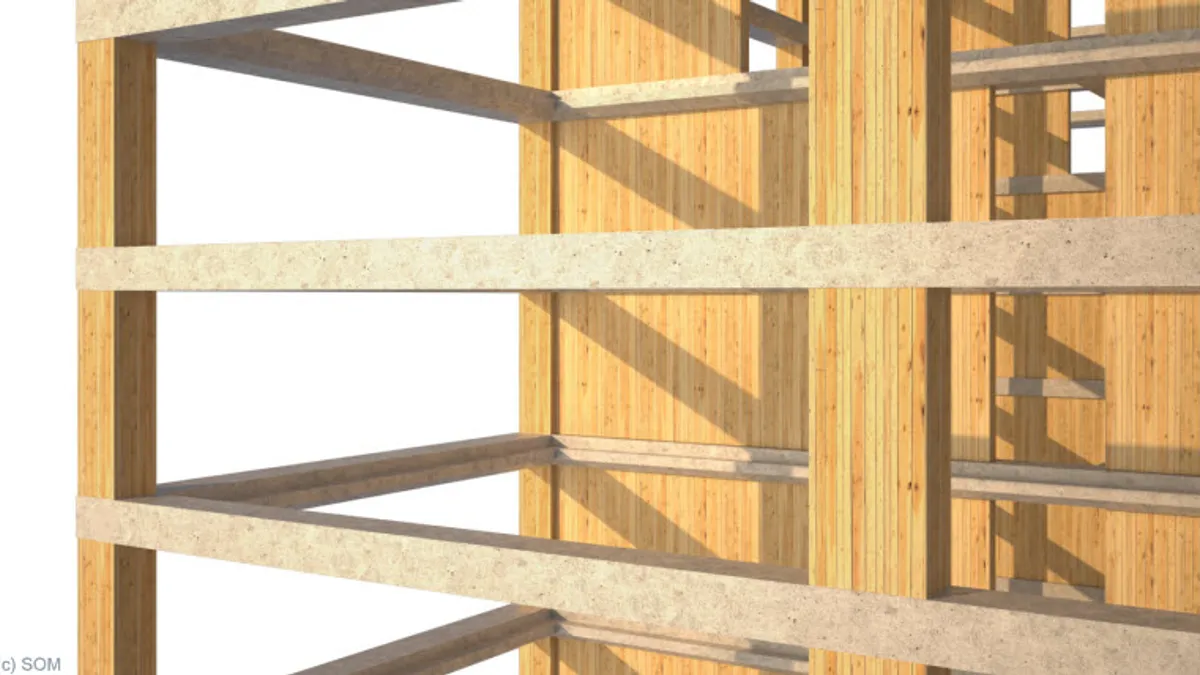Dive Brief:
- A cross-laminated timber (CLT) panel being used in the construction of a subfloor for the new $79.5 million College of Forestry building at Oregon State University (OSU) failed and collapsed earlier this month, according to the Corvallis Gazette-Times.
- The 4- by 20-foot panel was manufactured using five layers of 2- by 6-foot boards glued together at right angles and fell after becoming delaminated at one end. No one was injured, the panel has been replaced, and OSU officials, who have hired an engineer to determine the cause of the failure, said they have no plans to change construction materials.
- Crews have shored up already-installed CLT panels, and installation of additional members has been suspended pending the results of the investigation. The budget for the three-story, 80,000-square-foot Peavy Hall project, which is expected also to be used to promote the Oregon timber industry, has increased from $60 million to nearly $80 million, but OSU officials said they don't expect the CLT issue to push costs any higher.
Dive Insight:
Aside from one of its buildings featuring CLT, OSU has been involved in mass-timber research as well. In December, the university and architecture firm Skidmore, Owings & Merrill (SOM) released the results of two studies involving mass timber composite and CLT and concrete floor system supported by structural steel.
The first study determined that the floor system was able to take the weight of up to seven times its design service load unless the wood was charred to meet fire ratings. The second found that prefabrication could hasten the construction of a CLT building supported by steel.
However, the safety discussions that typically surround mass timber construction, particularly its use in high-rises, are those related to fire safety, not structural integrity.
Proponents of mass-timber insist that it is resistant to fire because it chars instead of burns, and protects and preserves the strength of the wood's underlying layers. So, even when the outside layer of the wood is charred, it retains up to 90% of its original strength.
Still, critics of mass timber maintain that concrete or steel construction is much safer, and, according to a study for the National Ready Mixed Concrete Association, some insurers might agree. The study found that builder's risk and commercial property insurance policies are more likely to be higher for wood-framed multifamily buildings than those made of concrete. Based on insurance quotes for hypothetical buildings, builder's risk insurance was 22-72% less expensive for concrete buildings and commercial property insurance was 14-65% less.












